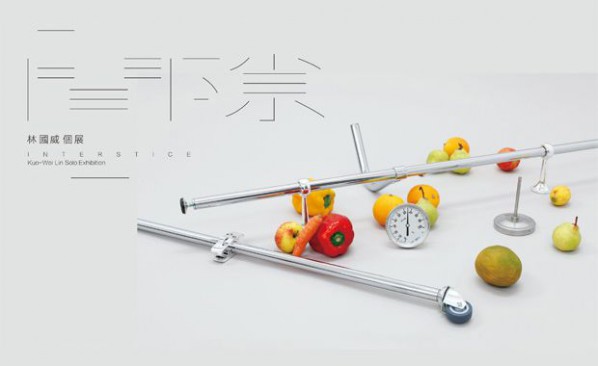
For his first solo exhibition, Interstice, Kuo-Wei Lin presents a new series of works at Michael Ku Gallery in Taipei. In Lin’s work, the core of his creations often deals with various human activities in everyday life by using related objects and materials to explore a specific personal or collective perceptual experience. Lin is interested in the French scientist and physicist Étienne-Jules Marey's research, particularly his experimental avant-garde photography from 1899 to 1902. Marey was aware of the importance of reconsidering the lack of value in natural phenomena as a reference. Through artificial manipulation, he observed nature and its movement, such as blood circulation, the movement of objects, and even the force of gravity. Additionally, Marey made a special smoke machine, using smoke to record the airflow in photography, revealing the invisible substance. To make invisible experience appear has become Lin’s central interest. In his new work, Interstice in Anonymous Transfer (Auto Save), Lin designed and organized the color-coated steel bars, assembling connectors and casters and mixed and arranged them into a movable skeleton mass. He appropriates the color of metro systems from different cities of the world. In this project, Lin uses several industrial thermometers, the most accurate instruments for measuring, as well as an instrument with a mushroom-like deployment, spliced into a steel handle. In fast-moving passenger trains, humans grip the poles and residue from the human body is imprinted and transferred.
Lin’s work focuses on the collective experience of people in urban transportation systems and ephemeral contact. He seeks to represent the body’s perception (temperature), and the role of swapping displacement and experience. His work swings between the personal and collective, in relation to a “real existence,” a “dislocation,” and an “absence.” In this vast circulative network, this alienated relationship has never been connected through a linguistic dialogue or a visual interaction, but it has manifested itself as an immediate and ambiguous contact as well as a physical interaction between strangers.
In a mounted sequence of eight photographs, Interstice - Fruit resistance, The Non-expiry Report, Lin prudently imitates the mise-en-scène of commercial photography. He appropriates optimal lighting within the setting of a delicate fruit still life.
The artist intends to cover the dramatic changes in the instrument through serial camouflage. The bi-metal thermometers translate the temperature of this stage. Objectively and absolutely, the indicator of the thermometer still remains at an extreme low and extreme high temperature value.
The juxtaposition and the absurd set of metrics of the industrial non-organics and the natural organics, reverse the viewer’s imaginative association in ordinary experiences, as well as in the making of the image.
Interstice in French means the gap between time, space or materials. It also is an anatomical term that means a small structural space between tissues or parts of an organ. The new work of this exhibition can be taken as the continuation of Lin’s work in the 2014 Taipei Biennial. It also reflects his early architectonic project in the POST.O exhibition in MOCA Taipei in 2009, which featured a temporary large sauna-like wooden corridor built from found material. In the context of using art as a lever or an anchor, Kuo-Wei Lin catalyzes the expansion of human perception. Perhaps Lin’s life as a long-term Taiwanese expatriate — living in boreal Germany and returning to his tropical country — is crucial to his art because the issue of his environment constantly influences his observations. The inter-impact of climate change and cultural differences inspire his observation and creativity. Lin attempts to re-build a path of viewing through considering the fundamental and philosophical human conditions, as well as through observing and rearranging the objects and materials.
About the exhibition
Duration: 2015.07.04-08.16
Venue: Michael Ku Gallery
Courtesy of the artist and Michael Ku Gallery.




























